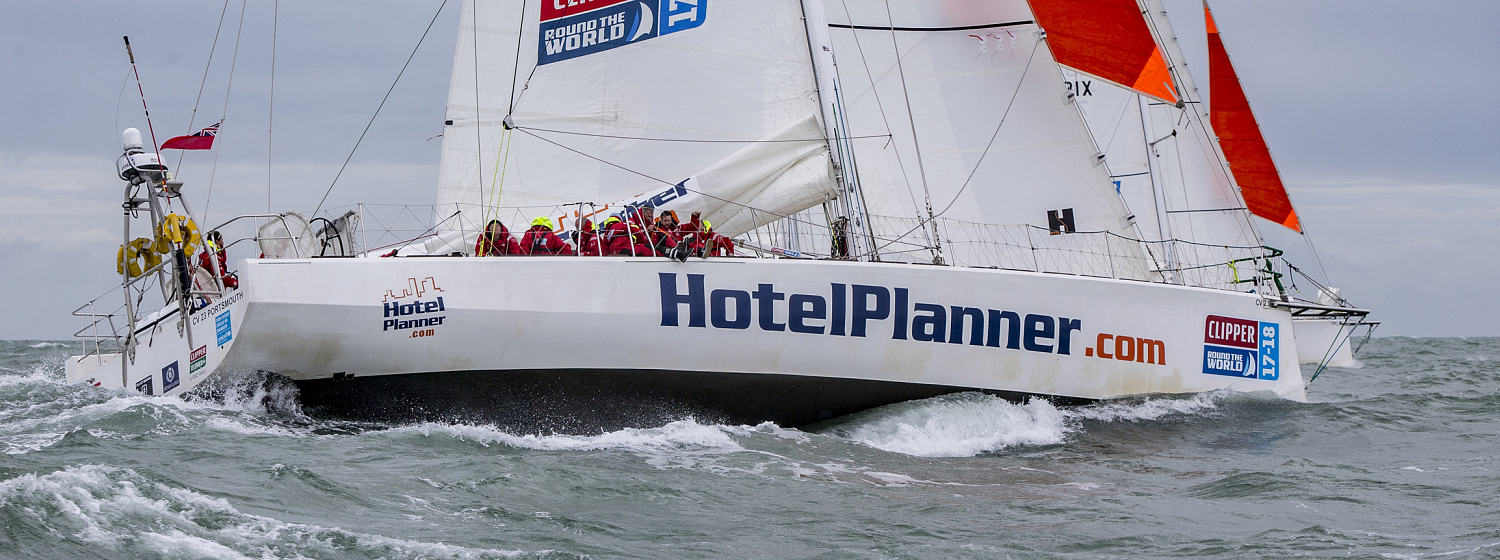Race 3 - Day 17
Crew Diary - Race 3 Day 17: Cape Town to Fremantle
17 November
Chasing Orion
I'm going to forego the abundance of narrative material generated by the tragicomedy below decks. Rather, the Attenboronian IMAX experience upstairs: helming at night, with the kite flying and the waves heaving underneath the boat, is truly unforgettable.
From the bunks, the wash over the hull, 40cm from your right ear, is the very sound of anticipation. This is accompanied by the hoots and exclamations of the crewmates above – from a top bunk their boots on deck are a snug 20cm from your nose. The creak of the spinnaker sheet being eased over a winch, or the jarring mechanical crunch-crunch-crunch of the vang being ground on are muffled by the wind and weather when above. But below, these actions echo and resonate in the boat. What a way to wake up.
Out of bed, one wants to know what on earth they have been doing to create so much havoc? Are the sails still in one piece? If this is a concern then the wind has probably filled in; a quick glance up the companion way will be enough to steel your nerves, tighten your grip on the stairs and make a run for another layer. Watch leaders are calling for haste, limbs emerge from distorted dry suit figurines, and the slap of gust and spray soon expels any 3am lethargy ahead of the on-watch to off-watch handover.
It's then an anxious wait to your turn on the helm. Where the banter flows in lighter air, a bouncing kite run makes for frequent, urgent interjections. Most often this involves actions to reduce power in the main sail (if the boat builds power, overcomes the strength of the helmswoman/man and screws upwind while surfing down a wave or in a gust, the free flying spinnaker may spin around the front of the boat, heeling the downwind guard rail into the water and rending the rudder completely ineffective. The dreaded, uncontrollable broach). Alternatively, if the kite collapses, the crew must work together to take in on the flailing sheets and refill the sail with wind (with no wind in the spinnaker, this tennis court of delicate fabric blows wildly in and out of the front of the boat. If the sheets holding the back corner of the sail are not brought in rapidly, reducing the slack, and the helmsperson is not able to align the boat and sail back into the wind, the spinnaker may turn around and around the forestay cables. The dreaded, irreversible wrap).
Then to the helm, the zone of tranquillity. You have 40 tonnes at your fingertips. Looking down, the red glow of the compass and orange-green of the instruments – wind angles, velocities made good, courses, headings. Do away with the instruments and look up: it's a clear night and Orion is your guide. The lough of the kite folds ghostly alongside the mast, illuminated by the forward facing steering light. Beyond that, nothing but you, the stars and the Southern Ocean. You have 30 knots of true wind. Can you make 20 knots boat speed? It's 12 knots to start with, the boat slack and heaving upright as you come up and off a wave. Then, as the slow ocean swell builds beneath your feet the speed picks up. Anticipating this, heave the wheel and bear away into the surf – don't worry the apparent wind will catch up nicely – you've already got 15-and-a-bit knots. Hold your course, hope for a gust on the way down and YES 20.2 knots. Keep surfing. Feel the rhythm of the boat as you brace against the helm and heel. Your companions reclaim their conversations. Orion is appearing, head, torso, belt over the horizon. Southern Cross spinning to my right. Soon the dawn will break the spell. Until then I'm chasing Orion home to Fremantle.
Xx
Jez
